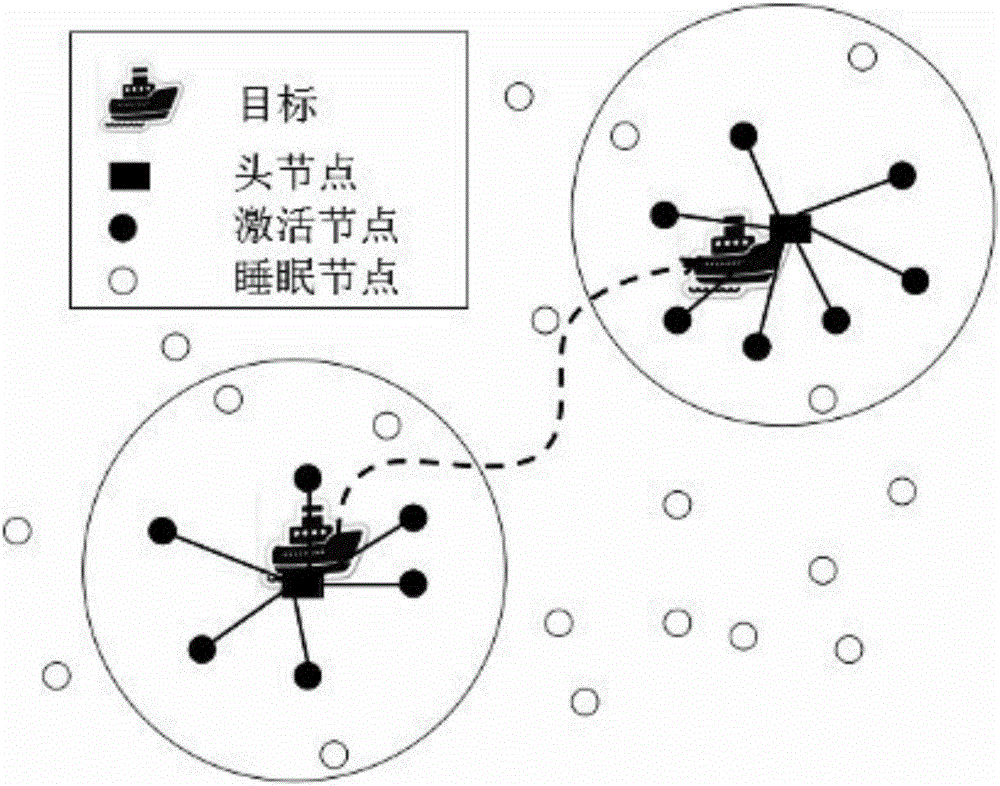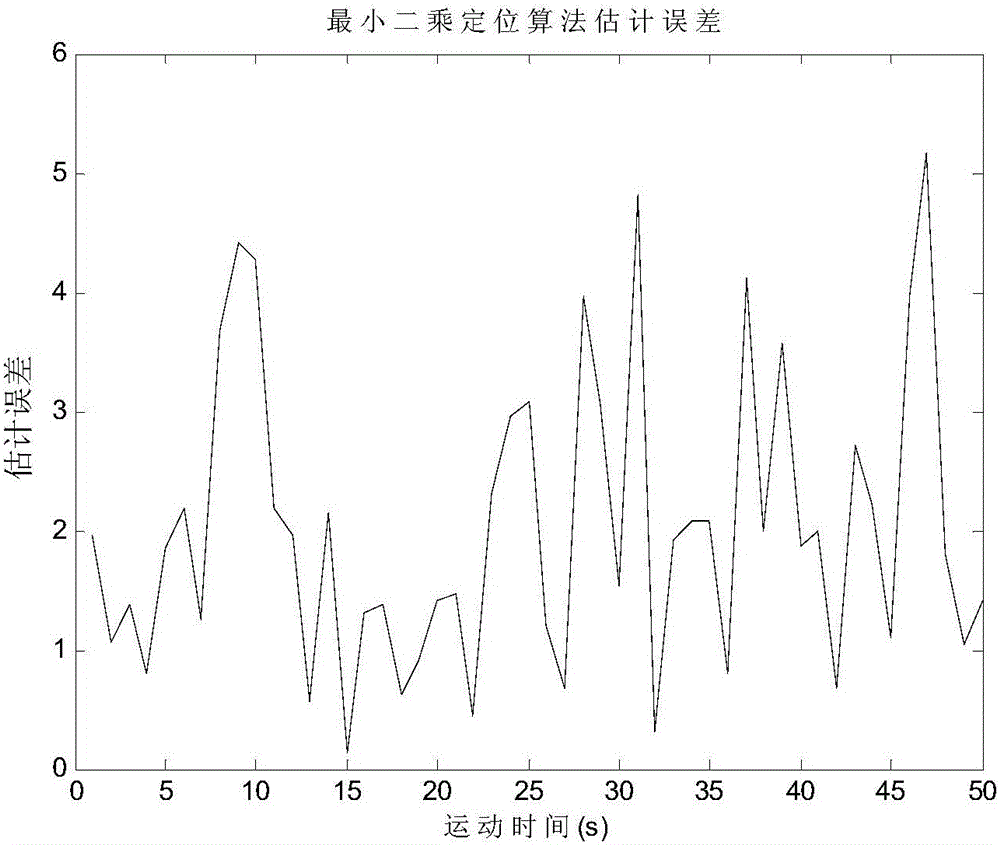Underwater moving target extended Kalman filtering tracking method based on distributed sensor energy ratios
An underwater moving target, distributed sensor technology, applied in instruments, measurement devices, radio wave measurement systems, etc., can solve the problems of high energy consumption, high precision, and small size of sensor nodes.
- Summary
- Abstract
- Description
- Claims
- Application Information
AI Technical Summary
Problems solved by technology
Method used
Image
Examples
Embodiment Construction
[0060] The present invention will be further described below in conjunction with the accompanying drawings and specific examples to verify the effectiveness of the present invention. figure 1 It is an underwater distributed sensor network tracking model, which is composed of moving targets, head nodes, active nodes and sleep nodes. In each positioning cycle of the algorithm, a certain number of sensor nodes within a certain range are adaptively activated, relying on multiple activation The sensors work together to locate and track moving targets. The specific implementation process is as follows:
[0061] Step 1: Set the target motion state model, observation model and marine environment parameters. The average sea depth is 28m. The ocean sound velocity gradient used is obtained from the shallow sea experiment in Zhoushan. The sensor network has M = 20 nodes, which are randomly deployed within the range of 6000*6000 at the depth of 28m. The sound source of the moving target ...
PUM
 Login to View More
Login to View More Abstract
Description
Claims
Application Information
 Login to View More
Login to View More - R&D
- Intellectual Property
- Life Sciences
- Materials
- Tech Scout
- Unparalleled Data Quality
- Higher Quality Content
- 60% Fewer Hallucinations
Browse by: Latest US Patents, China's latest patents, Technical Efficacy Thesaurus, Application Domain, Technology Topic, Popular Technical Reports.
© 2025 PatSnap. All rights reserved.Legal|Privacy policy|Modern Slavery Act Transparency Statement|Sitemap|About US| Contact US: help@patsnap.com



